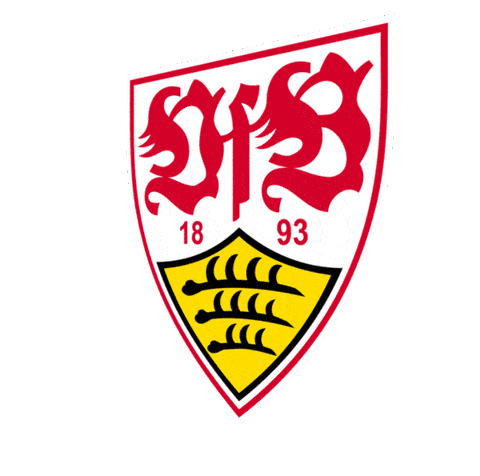The 5 Biggest German Football Clubs in History
- Think Football Ideas

- Aug 21
- 4 min read
The 5 Greatest German Football Clubs That Shaped History
When you think of German football, images of roaring stadiums, relentless rivalries, and tactical mastery immediately come to mind. While the Bundesliga has been the stage since 1963, its roots run much deeper, stretching back to the pioneering figures of the late 19th century who laid the foundations for a culture that thrives today.
The towering Yellow Wall in Dortmund and the historic Allianz Arena in Munich showcase how German football clubs aren’t just teams, they’re institutions that have shaped the game both domestically and across Europe.
Over the decades, a handful of these clubs have risen and fallen, but five stand tallest, leaving legacies defined by unforgettable matches, passionate fanbases, and silverware that tells stories from Germany’s footballing past
The 5 Biggest German Football Clubs in History

5. VfB Stuttgart
Stuttgart’s footballing journey reflects the resilience of a club that has endured waves of triumph and struggle yet remains firmly embedded in the national game. Founded in 1893, they are one of Germany’s oldest footballing institutions.
Their five national titles and multiple domestic cups highlight periods of strength, with the 2006/07 league win under Armin Veh standing as a modern high point.
What makes Stuttgart remarkable isn't only their silverware but their longevity at the elite level. Few clubs have spent as many years in the Bundesliga, consistently competing against Germany’s best despite occasional relegations.
In recent years, they’ve rebuilt again, highlighted by a runners-up finish in the 2023/24 season, proving their relevance in a league constantly shifting under the weight of financial giants.
4. Borussia Mönchengladbach
When you mention German football in the 1970s, Borussia Mönchengladbach demands recognition. This was the era when Die Fohlen transformed into a powerhouse, claiming five league titles in a decade and dazzling Europe with their attacking flair.
Their back-to-back UEFA Cup triumphs cemented their reputation as continental contenders, while their rivalry with Bayern Munich lit up the era.
Though the years since have brought inconsistency, including painful relegations, the club has retained its prestige. Their famed academy has produced generations of talent, ensuring a steady pipeline of stars.
Today, Gladbach remain synonymous with a golden chapter of German football, a reminder that dominance is not always eternal, but legacy endures.
3. Eintracht Frankfurt
Few clubs embody the cultural heartbeat of German football quite like Eintracht Frankfurt. Based in Hesse, this club has been a fixture since 1899, celebrated as much for its community roots as its footballing achievements.
Frankfurt’s honours include a German championship, five domestic cups, and notable European silverware, lifting the UEFA Cup in 1980 and the Europa League in 2022.
Eintracht’s passionate fanbase has long set them apart. The Waldstadion regularly fills to capacity, creating one of the Bundesliga’s most atmospheric arenas.
Beyond football, Frankfurt is a true sporting institution, operating as the world’s largest multi-sports club with thousands of athletes across dozens of disciplines. On the pitch, however, it is the blend of tradition, fortitude, and international recognition that cements their place in this ranking.
2. Borussia Dortmund
Borussia Dortmund are living proof of football’s power to capture the imagination of millions. With their iconic black and yellow colours and the towering “Yellow Wall” at Signal Iduna Park, Dortmund stand as one of Europe’s most recognisable clubs.
Founded in 1909, their rise to prominence has seen them collect eight national championships, a UEFA Champions League title in 1997, and multiple domestic cups.
Their rivalry with Bayern Munich, known as Der Klassiker, has given German football its most compelling modern spectacle. Dortmund’s story also carries moments of hardship, including financial struggles that nearly sank the club in the early 2000s.
Yet each time, they’ve rebuilt, often through a commitment to nurturing young talent and fostering one of the strongest fan cultures in the game. Few clubs embody both defiance and spectacle like BVB.
1. Bayern Munich
At the summit of German football sits Bayern Munich, a club whose name has become synonymous with dominance. Since their rise in the late 20th century, Bayern have collected an unmatched haul of domestic and international trophies.
Thirty-plus league titles, 20 German Cups, and three Champions League crowns form the spine of an extraordinary record. Their consistent success has made them the benchmark not only in Germany but across Europe.
What sets Bayern apart is their ability to evolve across eras, whether with legends like Franz Beckenbauer and Gerd Müller in the 1970s, Oliver Kahn and Bastian Schweinsteiger in the 2000s, or Robert Lewandowski and Thomas Müller in recent years.
Their global fanbase, immense financial clout, and relentless pursuit of excellence ensure that Bayern remain unrivalled in stature. For now, and likely decades to come, Bayern Munich’s throne in German football history is unshakable.








Comments